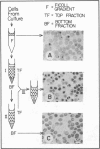Abstract
Concentration of infected erythrocytes was achieved in cell suspensions derived from long-term culture of Plasmodium falciparum growing asynchronously in human erythrocytes. This new procedure involves the slow centrifugation (at 33 g) of erythrocyte suspensions through 5% Ficoll solutions. Mature asexual erythrocytic forms are preferentially retained in the gradient solution (top fraction). After further gradient centrifugation of these parasitized cells, the concentration of mature forms is increased 15- to 31-fold and a mature form parasitaemia of 71-81% is obtained in the final erythrocyte suspension. Furthermore, at least 75% of the total number of the mature forms can be retrieved by this method. Parasitized cells that are not retained in the gradient are sedimented to the bottom of the tube (bottom fraction) and consist predominantly of ring forms. Parasites from both the top and bottom fractions are viable and have been used to initiate short-term synchronous cultures. By providing purified parasite preparations, this simple procedure will facilitate immunological, chemotherapeutic, and biochemical studies with P. falciparum.
Full text
PDF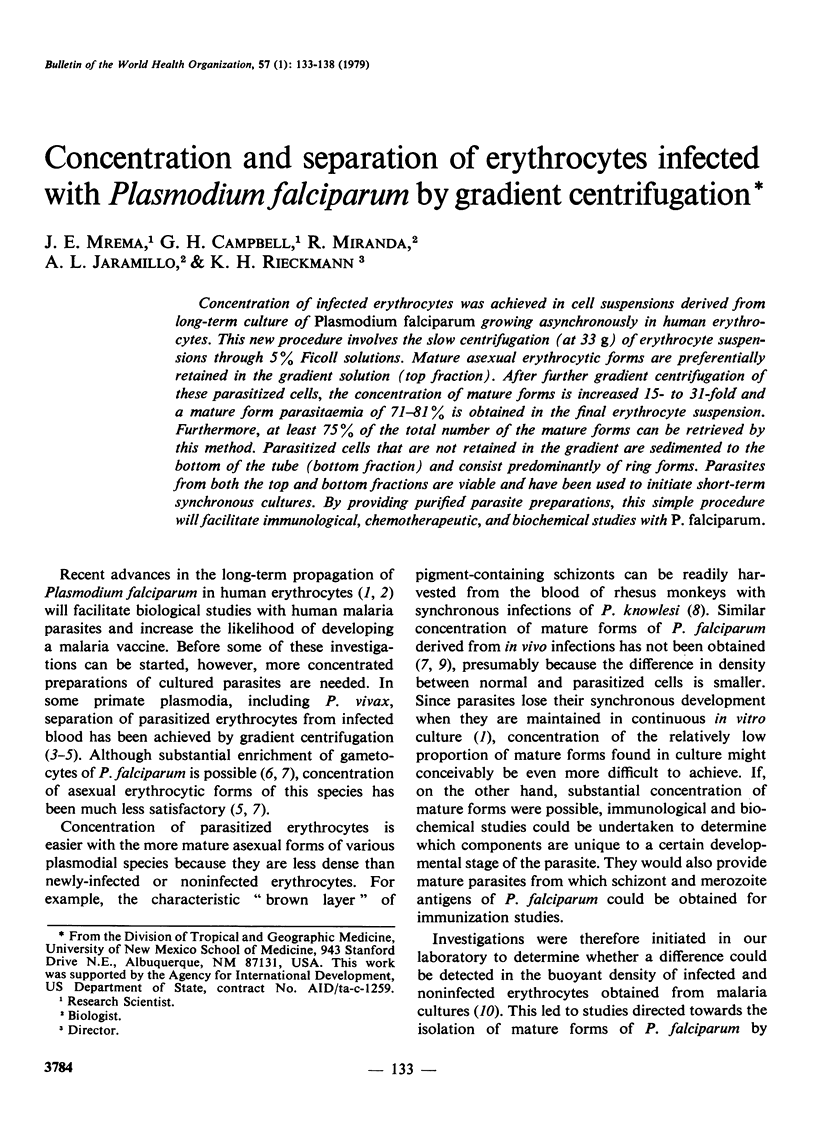
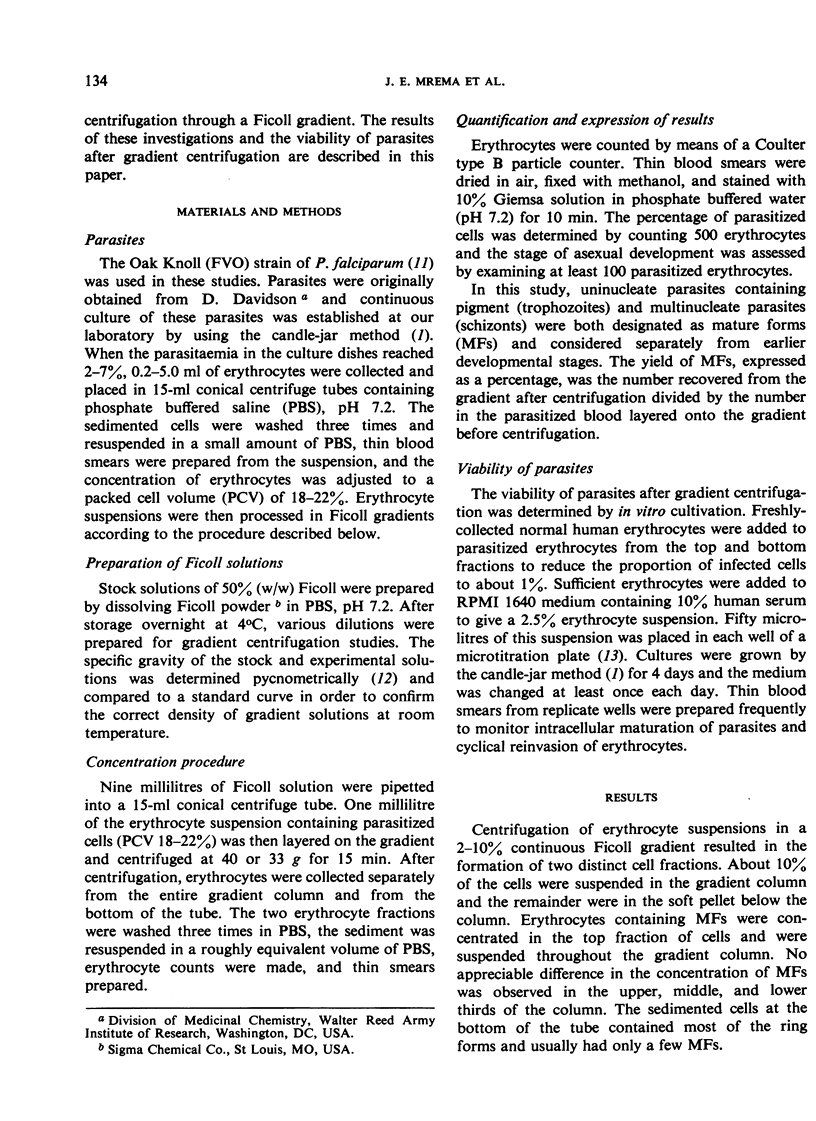
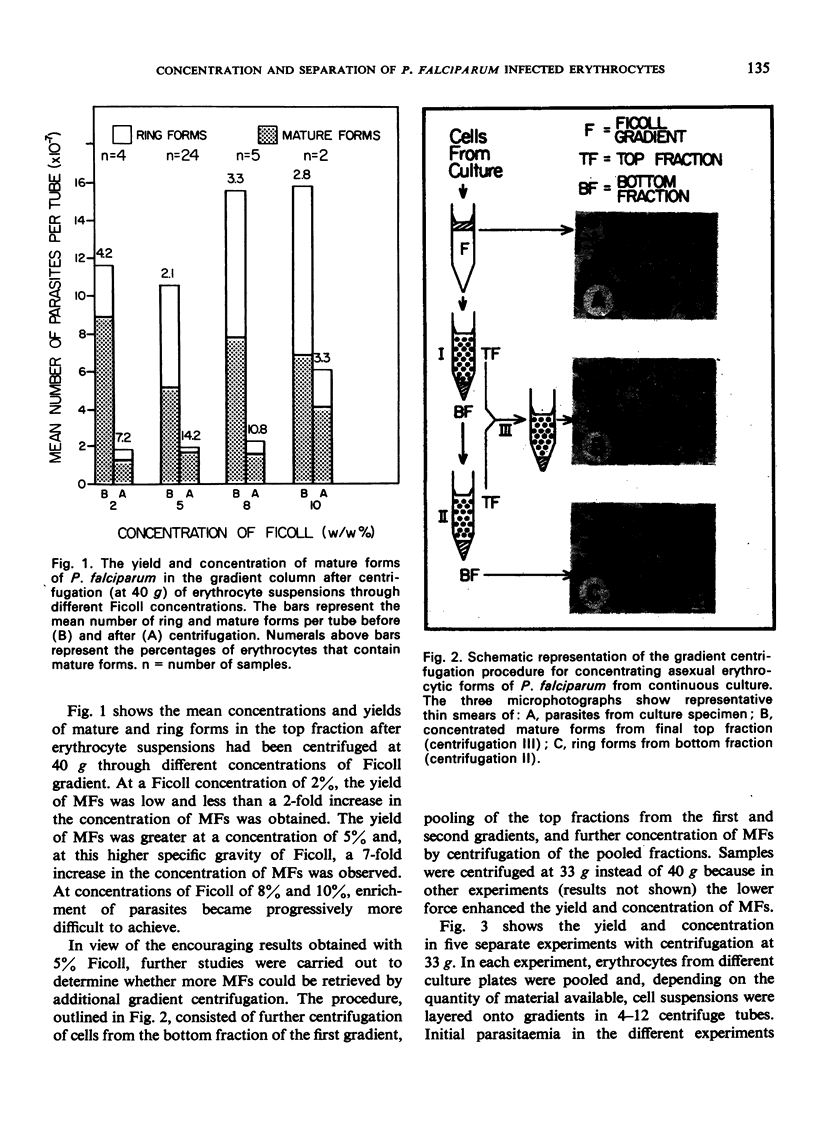
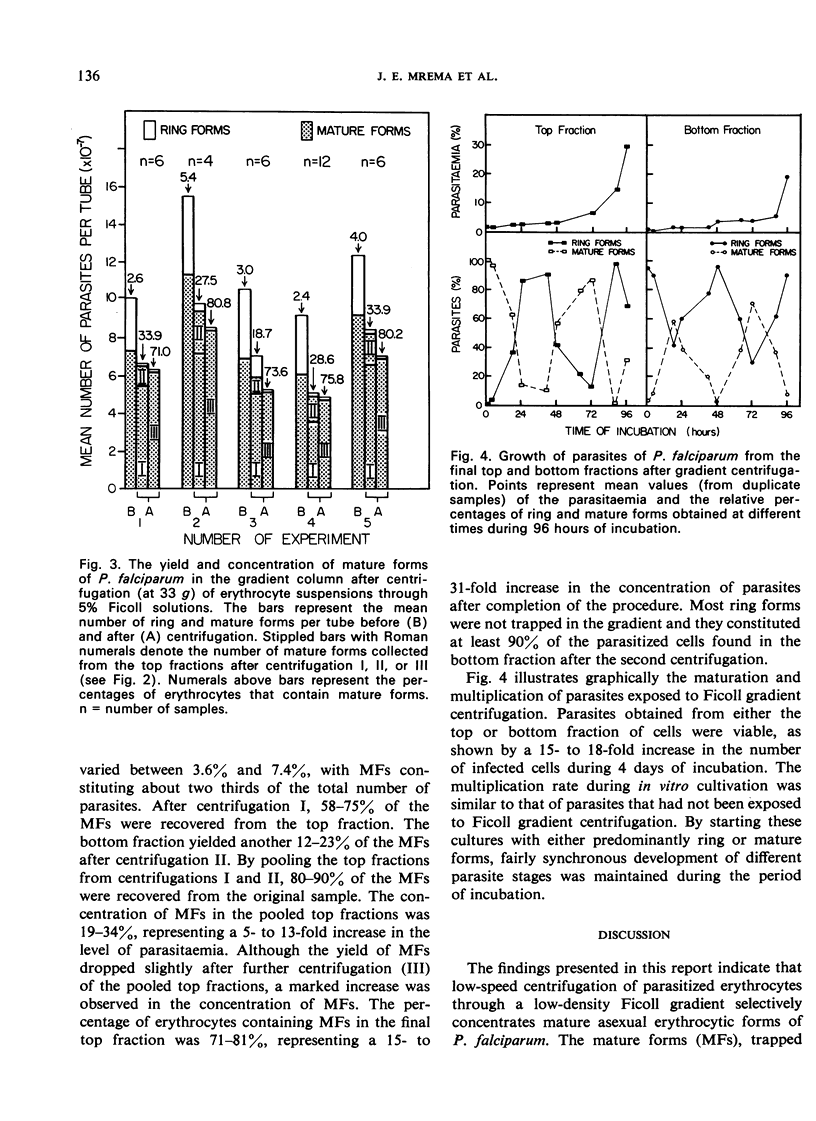
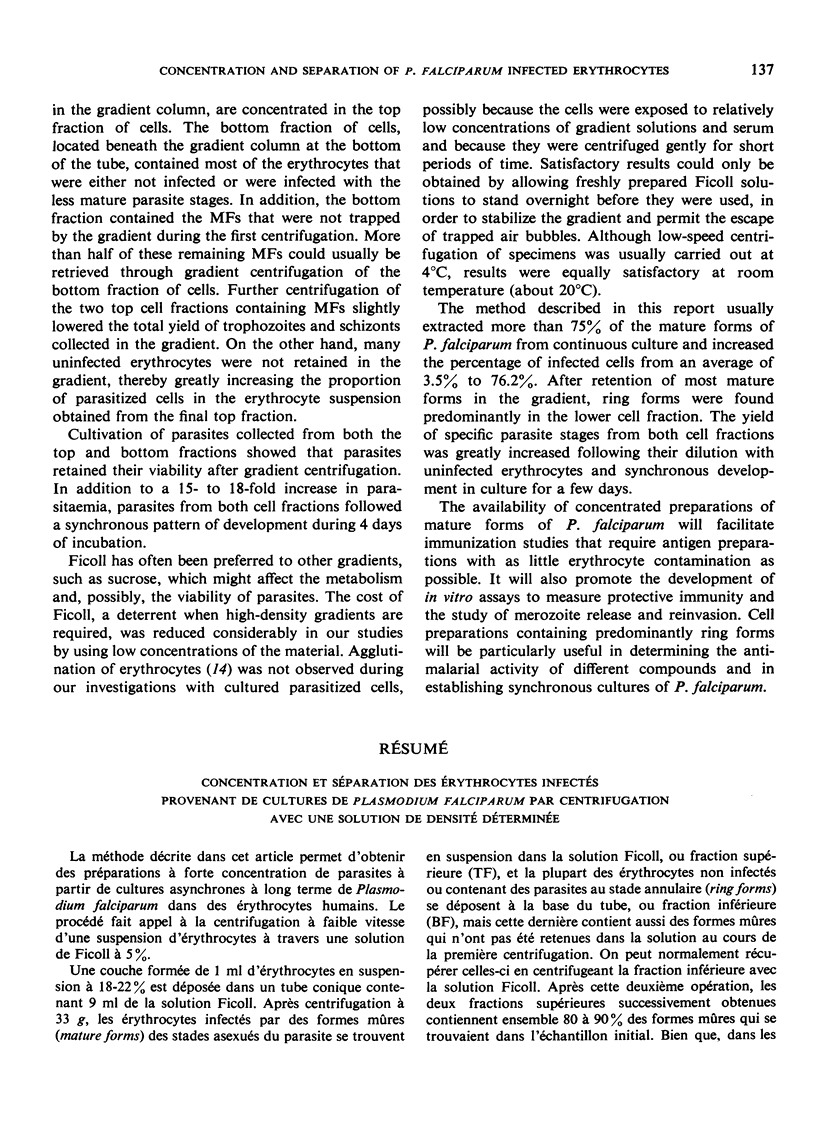
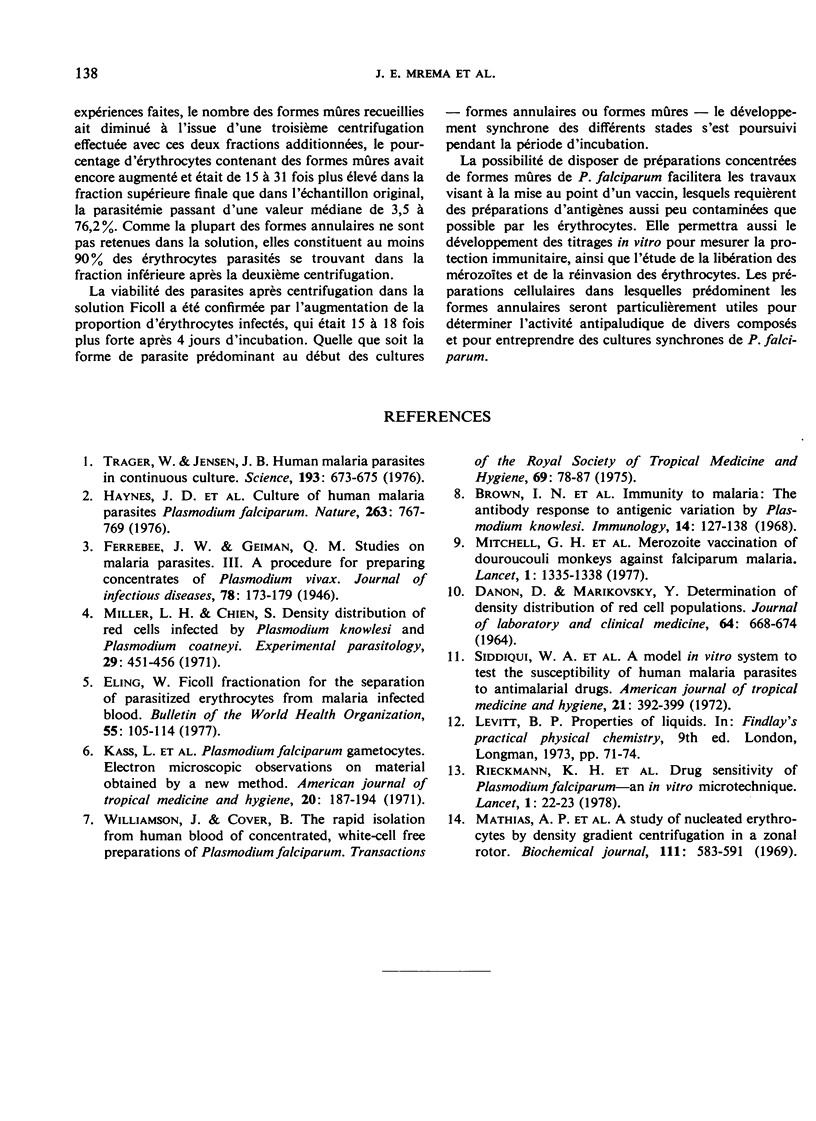
Images in this article
Selected References
These references are in PubMed. This may not be the complete list of references from this article.
- Brown I. N., Brown K. N., Hills L. A. Immunity to malaria: the antibody response to antigenic variation by Plasmodium knowlesi. Immunology. 1968 Jan;14(1):127–138. [PMC free article] [PubMed] [Google Scholar]
- DANON D., MARIKOVSKY V. DETERMINATION OF DENSITY DISTRIBUTION OF RED CELL POPULATION. J Lab Clin Med. 1964 Oct;64:668–674. [PubMed] [Google Scholar]
- Eling W. Ficoll fractionation for the separation of parasitized erythrocytes from malaria infected blood. Bull World Health Organ. 1977;55(1):105–114. [PMC free article] [PubMed] [Google Scholar]
- Haynes J. D., Diggs C. L., Hines F. A., Desjardins R. E. Culture of human malaria parasites Plasmodium falciparum. Nature. 1976 Oct 28;263(5580):767–769. doi: 10.1038/263767a0. [DOI] [PubMed] [Google Scholar]
- Kass L., Willerson D., Jr, Rieckmann K. H., Carson P. E., Becker R. P. Plasmodium falciparum gametocytes. Electron microscopic observations on material obtained by a new method. Am J Trop Med Hyg. 1971 Mar;20(2):187–194. [PubMed] [Google Scholar]
- Mathias A. P., Ridge D., Trezona N. S. A study of nucleated erythrocytes by density-gradient centrifugation in a zonal rotor. Biochem J. 1969 Feb;111(4):583–591. doi: 10.1042/bj1110583. [DOI] [PMC free article] [PubMed] [Google Scholar]
- Miller L. H., Chien S. Density distribution of red cells infected by Plasmodium knowlesi and plasmodium coatneyi. Exp Parasitol. 1971 Jun;29(3):451–456. doi: 10.1016/0014-4894(71)90054-3. [DOI] [PubMed] [Google Scholar]
- Mitchell G. H., Richards W. H., Butcher G. A., Cohen S. Merozoite vaccination of douroucouli monkeys against falciparum malaria. Lancet. 1977 Jun 25;1(8026):1335–1338. doi: 10.1016/s0140-6736(77)92551-x. [DOI] [PubMed] [Google Scholar]
- Rieckmann K. H., Campbell G. H., Sax L. J., Mrema J. E. Drug sensitivity of plasmodium falciparum. An in-vitro microtechnique. Lancet. 1978 Jan 7;1(8054):22–23. doi: 10.1016/s0140-6736(78)90365-3. [DOI] [PubMed] [Google Scholar]
- Siddiqui W. A., Schnell J. V., Geiman Q. M. A model in vitro system to test the susceptibility of human malarial parasites to antimalarial drugs. Am J Trop Med Hyg. 1972 Jul;21(4):393–399. [PubMed] [Google Scholar]
- Trager W., Jensen J. B. Human malaria parasites in continuous culture. Science. 1976 Aug 20;193(4254):673–675. doi: 10.1126/science.781840. [DOI] [PubMed] [Google Scholar]



